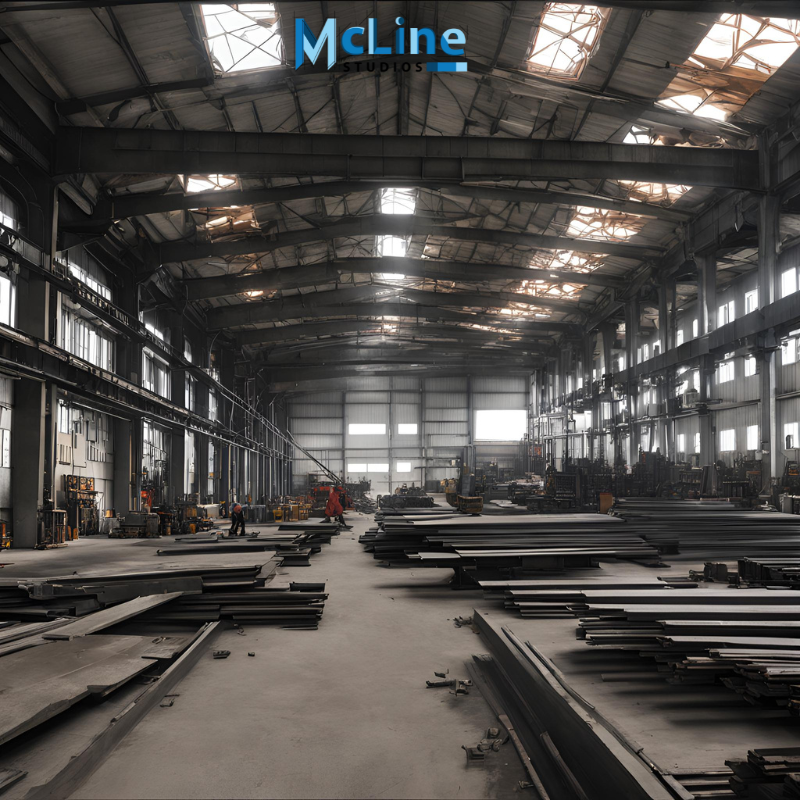Steel shop drawings are indispensable in construction projects, serving as the blueprint for fabricating and installing structural steel elements. These drawings provide detailed instructions for manufacturers, contractors, and fabricators, ensuring accuracy and efficiency in construction.
In this blog post, we delve into the crucial role of steel shop drawings and their impact on project success. We aim to equip professionals with insider tips and tricks to enhance their steel shop drawing skills. By mastering these techniques, professionals can streamline the construction process, minimize errors, and achieve exceptional results in steel fabrication and installation.
Understanding Steel Shop Drawings
Steel shop drawings are detailed technical drawings that depict the specifications, dimensions, and fabrication details of structural steel components used in construction projects. Their purpose is to communicate the design intent to fabricators, contractors, and other stakeholders involved in the construction process.
Accurate and detailed steel shop drawings are essential for ensuring precision in fabrication and installation, minimizing errors, and facilitating smooth project execution. They serve as a critical reference for fabricators, guiding them in producing steel components that meet the project requirements and specifications, ultimately contributing to the overall quality and success of the construction project.
Software and Tools for Steel Shop Drawing
Professionals utilize various software and tools to create steel shop drawings efficiently. Commonly used software includes AutoCAD, Tekla Structures, and SDS/2, offering robust features for drafting, modeling, and detailing steel structures. Additionally, tools like Bluebeam Revu and Adobe Acrobat facilitate annotation and collaboration on PDF documents.
When selecting software and tools, consider project requirements such as complexity, collaboration needs, and compatibility with industry standards. Evaluate features like 3D modeling capabilities, detailing options, and integration with fabrication processes. Ultimately, choose software and tools that align with your workflow preferences and enhance productivity in steel shop drawing creation.
Best Practices for Creating Steel Shop Drawings
To ensure clear, accurate, and comprehensive steel shop drawings, adhere to these insider tips:
1. Start with thorough planning and coordination to understand project requirements.
2. Maintain consistency in symbols, annotations, and abbreviations throughout the drawings.
3. Organize information logically, grouping related components and details for easy reference.
4. Use industry-standard conventions and symbols to enhance clarity and readability.
5. Double-check dimensions and specifications to avoid errors and discrepancies.
6. Collaborate closely with other stakeholders to address potential conflicts and ensure alignment with project goals.
By following these guidelines, you can produce steel shop drawings that meet industry standards, facilitate efficient fabrication and installation, and contribute to the success of construction projects.
Common Mistakes to Avoid
Avoid these common errors in steel shop drawing creation to maintain quality and precision:
1. Inaccurate dimensions or missing details.
2. Lack of clarity in annotations or symbols.
3. Failure to adhere to industry standards or project specifications.
4. Overlooking coordination with other trades or disciplines.
5. Ignoring feedback or revisions from stakeholders.
To prevent these mistakes, prioritize thorough planning, attention to detail, and collaboration with team members. Review drawings meticulously before finalizing and seek input from fabricators and contractors to identify and address potential issues early in the process, ensuring accuracy and quality in steel shop drawings.
Advanced Techniques and Strategies
Maximize efficiency and productivity in steel shop drawing creation with these insider tips:
1. Utilize parametric modeling to streamline repetitive tasks and maintain consistency.
2. Employ scripting or automation tools to expedite drawing generation and detailing.
3. Explore 3D modeling techniques for visualizing complex designs and identifying clashes.
4. Implement advanced detailing methods for custom components and intricate connections.
5. Leverage cloud-based collaboration platforms for real-time communication and feedback.
For specialized requirements, consider integrating specialized plugins or extensions tailored to the steel fabrication industry. By incorporating these advanced techniques, you can enhance precision, efficiency, and quality in steel shop drawing creation, even for the most complex designs.
Conclusion
In summary, steel shop drawings play a crucial role in construction projects, translating design concepts into actionable plans. By understanding the essential components and best practices, professionals can create clear, accurate, and comprehensive drawings. Avoiding common mistakes and implementing advanced techniques enhances efficiency and productivity.
I encourage readers to apply the insider tips and tricks shared in this blog post to elevate their steel shop drawing skills. With dedication and practice, mastering steel shop drawing techniques will empower professionals to excel in their professional endeavors and contribute to the success of construction projects.





